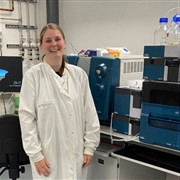Tutor HuntResources Biology Resources
Microbiology: The World Your Eyes Can’t See
Introducing...microbes!
Date : 06/09/2021
Author Information

Uploaded by : Liz
Uploaded on : 06/09/2021
Subject : Biology
Micro (adjective). Extremely small.
So, microbiology = extremely small biology. No, not teeny tiny microscopes and flasks. But rather the biology of things that are teeny tiny. So teeny tiny your eyes can t even see them well, without a microscope. However, until I came to apply for university *12 years ago* I hadn t actually heard of it as a subject and therefore I figured maybe a lot of other people aren t really sure what it is either. Ever sent a sample off from the doctor s because they re not sure what s wrong with you? It s probably ended up in a Microbiologist s in-tray. Literally. There are three main teeny tiny things covered by Microbiology: bacteria, viruses and fungi, and I m going to try and explain the difference between them.
Bacteria. Always hear about them on the Dettol advert, don t you? Kills 99.9% of bacteria! . 'What an achievement!", we all cry! Except as soon as you touch the surface again, it s got bacteria on it. So, now that you re all chronic germaphobes let me explain. We are covered in bacteria inside and out. And most of them are actually good for us, but some of them are veeeery bad. Bacteria are living things, just like you and I. Except they re much, much, much, much simpler. They re just one single cell, containing all the things it needs to make more of itself (mainly a variety of proteins). They come in a range of different shapes and sizes, with some preferring to live in your stomach (I m sure you ve all heard of E.coli) and others preferring to live on your skin (such as Staphylococcus). The vast majority of the time these guys are the Batman of our bodies, saving us from the likes of the evil Joker bacteria that come along and make our lives a misery by causing chaos with our health. That s when you get sick. Doctor s are often able to tell when an infection is being caused by bacteria as you will be displaying specific symptoms. If you do have a bacterial infection, you re in luck! This is what antibiotics are for they can either kill the bacteria or stop it from growing to give your body chance to fight it off. If you want to consider how antibiotics might work, have a look into Pharmacokinetics.
So, the next commonly known microbe is a virus and I m sure the one we are all acquainted with is the Flu virus (formally known as influenza B). It instils fear into all those who have had the misfortune to catch it, and even more fear in those that have never had it! Viruses are NOT LIVING, they re essentially a bunch of proteins packed together containing bits of DNA (or RNA) that mess with our cells and make us feel really, really rubbish. The main fact here is that they aren t living like their bacterial friends, so it makes it much harder to develop drugs against them. Sure, we have medicines for some of the more chronic viruses (HIV, Hepatitis C) but not really many others. The problem is, viruses are able to infect our bodies in huge numbers and what this means is they re able to mutate faster. So, we find a medicine that works and within no time at all the virus has changed so that the medicine no longer works and it can do this again and again and again. This is really why you don t get given Tamiflu every time you go to the doctors feeling worse for wear if we give it to people for regular flu, it won t work when the really severe flu comes around (think swine flu, bird flu or for one that was actually bad look at Spanish Flu).
Fun Gus. Fungus. Just the word makes you cringe a bit, right? Instantly conjuring up images of crusty Athlete s Foot eugh! The obvious example that everyone knows of fungus is mushrooms but clearly I m not talking about being infected by mushrooms. The type of fungi I m talking about is mold and yeast. Now, it would be unfair to totally vilify the yeasts, after all it does give us bread and alcohol (see Saccharomyces carlsbergenis clue is in the name)! However, other versions of yeast are responsible for some awful looking infections, the most common of which is thrush. Molds are even worse they can be much harder to get rid of because some of them produce spores. Which are pretty much resistant to everything. Mold likes damp and warm, which is why the condition is called Athlete s Foot, after the people most prone to is because of their warm sweaty trainer feet, delightful! However, there are anti-fungals, usually in the forms of creams or gels, so it s not all doom and gloom!
The main thing is whether it s bacterial, viral or fungal if you REALLY don t feel well you should go and see a doctor. If they tell you you don t need antibiotics trust them. Taking antibiotics when you don t need them is actually worse for not just you, but everyone. You don t want to be responsible for cultivating a super-mega-ultra-antibiotic resistant bacteria now, do you? I sure as hell don t, sounds pretty evil.
This resource was uploaded by: Liz
